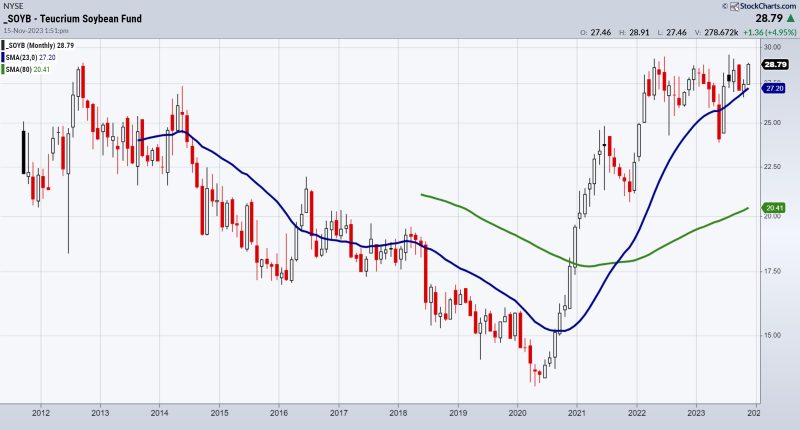Soybeans have been largely overlooked in the past, but recent developments in the industry could potentially make them the next parabolic runner, ushering in a new age of commodity trading.
Soybeans have a long and hallowed history as a stable, yet low-profile commodity. Despite their abundance in Arable and livestock production, soybeans have not been a prominent commodity – until recently. In the past decade, their prices have skyrocketed due to a number of factors, making them a viable option for investors and traders.
The first factor is increased global demand for soybeans. On the one hand, it is estimated that around 90 percent of all U.S. soybean production is exported to other countries. This influx of sales has led to a powerful shift in the global market. On the other hand, the plant-based protein market is expected to grow between now and 2030 and this growth has also pushed up soybean prices.
The second reason is China’s growing role in the soybean industry. China’s growing population and demand for processed foods mean that they are now the world’s largest soybean importer. This creates a ripple effect that drives prices up as there is a huge demand for soybean-based products.
The third factor is a growing interest in the environmental sustainability of commodities. As the world looks to cut down on their carbon footprints, soybean farmers are keen to emphasize the carbon sequestration advantages of different sources of protein, namely that animals and food crops require different amounts of CO2 to produce, and soybeans are one of the most carbon efficient sources of edible protein available.
Despite their traditional low-profile, soybeans have made a name for themselves in a relatively short amount of time and now, more people than ever are beginning to take notice. Between their current global demand, growing environmental consciousness, and new-found popularity amongst Chinese buyers, it looks as though this parabolic runner is set to make headlines for many years to come.

